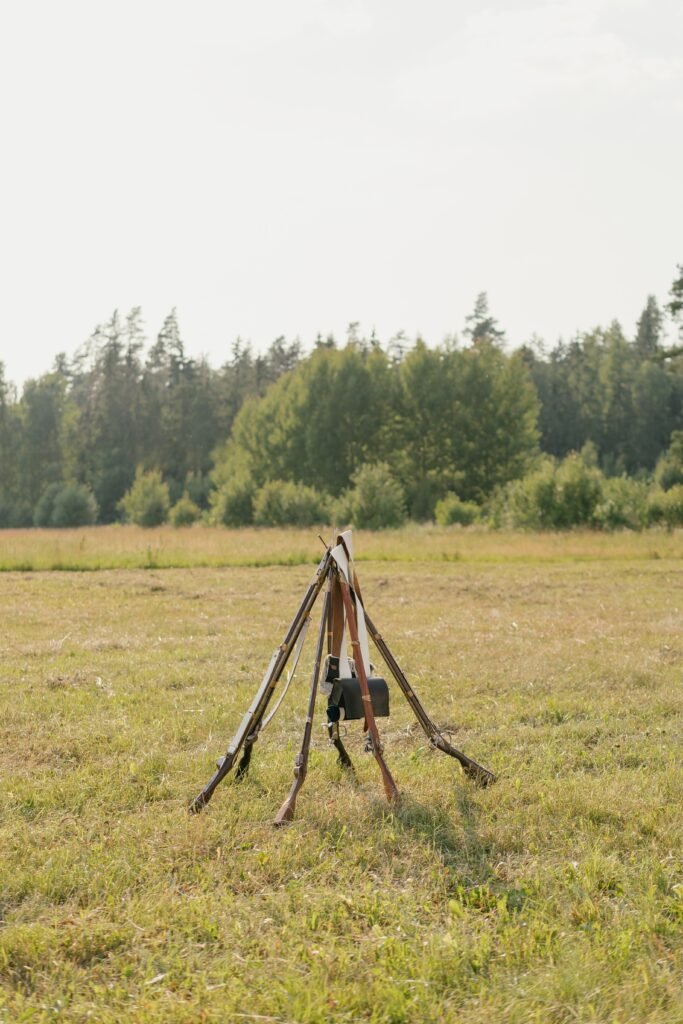Imagine stepping into your backyard as the sun sets, and being enveloped in a warm glow that highlights the beauty and serenity of your outdoor space. With the right landscape lighting design techniques, you can transform your garden into a captivating oasis that invites relaxation and enhances the functionality of your outdoor living areas. From strategic placement of lights to choosing the perfect fixtures, this article explores the art of landscape lighting design and how it can elevate your outdoor spaces to new heights.
Choosing the Right Lighting Fixtures
When it comes to landscape lighting, choosing the right fixtures is crucial in achieving the desired effects and functionality. The first step in this process is determining the purpose of the lighting. Are you looking to highlight key features, create a certain mood, or ensure safety and security in your outdoor space? Understanding your goals will guide your decision-making process.
After determining the purpose, it is important to consider the size and scale of your outdoor space. A large backyard will require a different approach than a small patio or deck. Taking into account the dimensions of the area will help you determine the number and placement of lighting fixtures needed to effectively light up the space.
Once you have an idea of the purpose and scale of the lighting, it’s time to explore different lighting fixture options. There is a wide range of choices available, from traditional to modern, and from subtle to bold. Consider the style of your outdoor space and choose fixtures that complement the existing design elements.
One popular and energy-efficient option to consider is LED lighting. LED lights offer numerous benefits, including long lifespan and low energy consumption. They are also available in a variety of colors and intensities, providing flexibility in creating the desired atmosphere. LED lights are a cost-effective and eco-friendly choice for landscape lighting.
Highlighting Key Features
Identifying the focal points in your outdoor space is essential in creating a visually appealing landscape. Focal points can include architectural elements, trees, sculptures, or any other feature you want to draw attention to. By strategically placing lighting fixtures, you can emphasize these key features and make them stand out.
Uplighting is a popular technique for highlighting trees and architectural elements. Placing lights at the base of a tree and angling them upward creates a dramatic effect, casting beautiful shadows and enhancing the texture of the tree’s foliage. Similarly, uplighting architectural elements such as columns or statues can add depth and visual interest to your outdoor space.
In contrast, downlighting is used to provide functional lighting. By placing fixtures at a higher point and pointing them downward, you can effectively illuminate pathways, seating areas, or any other space where adequate visibility is required. Downlighting not only serves as a safety feature but also adds a pleasant ambiance to the outdoor environment.
For pathways, incorporating step lighting is essential to ensure safe navigation. These small and discrete fixtures can be installed along the edges or directly into the steps, creating a soft glow that guides you along your way. Step lighting adds both functionality and visual appeal to your outdoor space.

This image is property of images.pexels.com.
Creating a Mood with Lighting
The right lighting can transform the mood of your outdoor space, creating a cozy and inviting atmosphere. One factor to consider is the color temperature of the lighting. Warm lighting tones, with a lower color temperature, typically range from 2000K to 3000K and create a soft and intimate feel. On the other hand, cool lighting tones, with a higher color temperature, usually in the range of 4000K to 5500K, provide a brighter and more energetic ambiance.
To further enhance the mood, incorporating dimmers into your lighting design allows you to control the intensity of the lighting. Dimmers offer the flexibility to adjust the brightness according to the occasion or personal preference. Whether you’re hosting a lively outdoor party or enjoying a quiet evening under the stars, dimmers allow you to create the perfect lighting setting.
For a more unique and vibrant atmosphere, you can experiment with colored lighting effects. Colored LED lights are available in a variety of hues and can be used to create a dynamic and visually stunning landscape. Whether you want to create a romantic pink glow or a festive multicolored display, colored lighting effects can add a touch of personality and creativity to your outdoor space.
Another technique to consider is incorporating different light levels and layers. By combining different types of lighting fixtures, such as uplights, downlights, and pathway lights, you can create an interesting interplay of light and shadow. Layering the lighting in this way adds depth and dimension to your outdoor space, making it more visually appealing and dynamic.
Considering Safety and Security
In addition to aesthetics, safety and security are important considerations when designing your landscape lighting. Well-placed lighting can deter potential intruders and provide peace of mind. One way to achieve this is by using security lighting strategically. These lights are typically brighter and more intense, and can be installed near entry points, windows, or any area that requires additional security.
Another safety feature to consider is motion sensor lights. These lights are triggered by movement and automatically turn on when someone enters the detection zone. Motion sensor lights are particularly useful near entrances or along pathways, providing added visibility and deterring unwanted visitors.
Proper lighting for stairways and walkways is essential to prevent accidents and ensure safe navigation at night. Installing lights at regular intervals along the edges of steps or along the sides of walkways can provide the necessary illumination to avoid trips and falls. It’s important to consider the height and location of the lights to ensure maximum visibility and safety.
Using zone lighting is another effective way to create a well-lit space while preserving energy. Instead of lighting the entire outdoor area, you can divide it into zones and only light the specific areas that are currently in use. This not only reduces energy consumption but also creates a more intimate and cozy atmosphere in each zone.

This image is property of images.pexels.com.
Energy Efficiency and Sustainability
When it comes to landscape lighting, energy efficiency and sustainability should be taken into consideration. Choosing energy-efficient lighting fixtures is not only environmentally friendly but can also save you money in the long run. LED lights are an excellent choice for energy efficiency, as they consume less energy and have a longer lifespan compared to traditional incandescent bulbs.
For those looking for a sustainable and eco-friendly option, solar-powered lighting is worth exploring. Solar lights are powered by the sun’s energy and do not require electricity, making them a renewable and cost-effective choice. They are easy to install and can be placed in any area with access to sunlight.
To further optimize energy efficiency, the use of timers or smart lighting controls can be beneficial. Timers allow you to schedule when the lights turn on and off, ensuring that they are only in use when needed. Smart lighting controls, such as motion sensors or remote controls, offer even more flexibility and convenience in managing your outdoor lighting.
Considering low-voltage lighting is another way to reduce energy consumption. Low-voltage systems operate on 12 volts instead of the standard 120 volts, resulting in lower energy usage. These systems are also safer to install and can be a cost-effective option for illuminating your outdoor space.
Addressing Challenges: Outdoor Elements
Outdoor lighting fixtures face various challenges due to exposure to the elements. To ensure the longevity and functionality of your fixtures, it’s important to protect them from weather conditions. Choosing fixtures made from durable and weather-resistant materials, such as aluminum or stainless steel, can help prevent damage caused by rain, wind, or sunlight.
Glare and light pollution are two common issues that need to be addressed when designing landscape lighting. Glare occurs when a light source is too bright or not properly shielded, causing discomfort and reducing visibility. To minimize glare, choose fixtures with built-in shields or louvers that direct the light downward and prevent it from scattering.
Light pollution refers to the excessive or misdirected artificial light that causes sky glow and disrupts the natural nighttime environment. To reduce light pollution, choose fixtures with a cut-off or downlight design, which focuses the light only where it is needed and minimizes excess light spill. Additionally, using lower intensity bulbs and controlling the direction and angle of the lighting can help mitigate light pollution.
Another challenge to consider is the impact of insects on outdoor lighting. Bugs are attracted to light sources, which can be bothersome when trying to enjoy the outdoor environment. To minimize the presence of insects, consider using bug-resistant bulbs or fixtures that emit light in a wavelength less attractive to insects. Additionally, placing lighting fixtures away from seating areas can help divert bugs away from those locations.

This image is property of images.pexels.com.
Designing Lighting for Different Outdoor Spaces
Different outdoor spaces require different lighting techniques to create the desired effect. For a patio or deck, creating a cozy atmosphere is key. Consider using a combination of downlights and string lights to provide both functional and decorative lighting. String lights can be draped overhead to create a warm and inviting glow, while downlights can be strategically placed to provide task lighting for activities such as dining or socializing.
Enhancing the curb appeal of a front yard can be achieved by placing emphasis on the architectural features of your home. Use uplights to highlight distinctive pillars or columns, and consider placing path lights along the walkway to guide visitors to your front door. Architectural lighting can add a touch of elegance and sophistication to your front yard, making it visually appealing even after the sun sets.
Designing lighting for a backyard oasis requires a balance between functionality and aesthetics. Incorporate a variety of lighting techniques to create a multifaceted space. Uplighting can be used to highlight trees or focal points, while pathway lights and task lighting can ensure safe navigation and convenient illumination in outdoor living spaces. Incorporating lighting into water features or pools can also create a stunning visual effect.
For a garden or flower beds, using accent lighting can highlight the beauty of the plants and create a magical atmosphere. Use well lights or adjustable spotlights to illuminate specific plants or focal points within the garden. Consider using low-level lighting to create soft pools of light that showcase the textures and colors of the plants, adding depth and visual interest to the garden.
Considering Budget and Maintenance
When planning your landscape lighting design, it’s important to set a budget to avoid overspending. Determine how much you’re willing to invest in your outdoor lighting project and allocate your budget accordingly. Consider the cost of the fixtures, installation, and any additional wiring or accessories needed.
In addition to upfront costs, it’s important to consider the long-term maintenance needs of your lighting fixtures. Some fixtures may require regular maintenance, such as bulb replacements or cleaning, while others may be low-maintenance and require minimal upkeep. It’s important to factor in the time and effort required to maintain the fixtures to ensure they continue to function properly and look their best.
When deciding whether to take on a landscape lighting project as a DIY endeavor or hire a professional, consider your own expertise, time availability, and budget. DIY options can be cost-effective and give you complete control over the design process. However, professional installation can ensure proper placement and wiring, as well as save you time and potential headaches.
Incorporating Lighting as a Design Element
Using lighting as a design element can elevate the overall aesthetics of your outdoor space. Lighting can be used to create visual interest and drama, drawing attention to certain features or areas. Consider using lighting techniques such as shadowing or silhouetting to create intriguing effects. Shadows can add depth and texture, while silhouettes can create a mysterious and artistic ambiance.
Adding a statement lighting fixture as a focal point can transform the entire look of your outdoor space. Choose a fixture that complements the style of your space and creates a visual impact. Whether it’s a chandelier, pendant light, or an oversized lantern, a statement fixture can become a conversation piece and add a wow factor to your outdoor design.
Incorporating lighting into outdoor furniture and decor can also enhance the overall design. Consider using string lights to outline pergolas, umbrellas, or outdoor seating areas. You can also use LED strips to create a soft glow along the edges of outdoor tables or built-in seating. Lighting integrated into furniture adds both functionality and style, creating a cohesive and aesthetically pleasing outdoor environment.
Using lighting to complement the overall design style of your outdoor space is essential. Whether you have a contemporary, rustic, or traditional design, choosing lighting fixtures and techniques that align with the overall style creates a cohesive and harmonious look. Lighting should be seen as an integral part of the design, enhancing and accentuating the existing elements rather than overpowering them.
Getting Creative with Landscape Lighting
Landscape lighting offers endless possibilities for creativity and is an opportunity to think outside the box. Consider using shadow and silhouette effects to create unique and captivating visual displays. By strategically placing lighting fixtures, you can cast interesting shadows on walls, fences, or the ground, adding a touch of mystery and intrigue to your outdoor space.
If you have a pool or water feature in your outdoor space, underwater lighting can take it to the next level. By installing waterproof lights under the water, you can create a stunning ambiance and showcase the beauty of the water. Underwater lighting can create a mesmerizing effect, illuminating the water and creating a soothing and serene atmosphere.
For a festive and celebratory atmosphere, adding festoon lights or string lights is a great option. These lights can be hung above outdoor dining areas, patios, or any other space where you want to create a joyful and lively ambiance. Festoon lights are available in various styles and colors, allowing you to customize the lighting to match your desired theme or mood.
To create a starry night effect, strategic lighting placement is key. By placing lights at different heights and angles, you can mimic the natural twinkle of stars and create a magical and enchanting atmosphere. This effect works particularly well in open spaces or areas with tall trees that allow for a sense of depth and dimension in the lighting.
In conclusion, landscape lighting design techniques offer a multitude of possibilities for enhancing your outdoor spaces. By choosing the right lighting fixtures, highlighting key features, considering the mood and ambiance, ensuring safety and security, prioritizing energy efficiency and sustainability, addressing outdoor challenges, designing for different outdoor spaces, considering budget and maintenance, incorporating lighting as a design element, and getting creative, you can transform your outdoor environment into a stunning and functional oasis. So don’t hesitate to start exploring the world of landscape lighting and bring your outdoor spaces to life after dark.
